- Home
- Advertise With us
- World News
- Tech
- Entertainment
- Travels & Tours
- Contact US
- About us
- Privacy Policy
Top Insights
20 Classic Emo & Post-Hardcore Albums Turning 20 in 2025

2005 was the year that emo reached peak popularity. The videos for My Chemical Romance’s “Helena” from the previous year’s Three Cheers for Sweet Revenge and Fall Out Boy’s “Sugar, We’re Goin Down” from ’05’s From Under the Cork Tree came out within about a month of each other, and the next thing you knew, emo had fully taken infiltrated the world of mainstream music. When those two bands both joined the Warped Tour that summer, the amount of attention that it brought to the entire scene/genre was unstoppable. The ceiling for emo’s commercial success seemed non-existent, and a handful of bands seized the moment by making their own swings at rock stardom. Other bands rejected the increased commercialism of the genre, and as a result, 2005 birthed a handful of records that pushed the artistic boundaries of what emo or post-hardcore could be, even if–or because–it meant less commercial success. And throughout all of that, you also had the bands who were just keeping their heads down and doing their own thing, regardless of all the mainstream attention that was put on this music.
In honor of their 20th anniversaries, here’s a look back on 20 emo albums released that year from all across the genre’s spectrum. Some of these represent emo at its poppiest and most commercial, and others had nothing at all to do with the version of emo that took over MTV and suburban malls. Some of these albums still deserve to reach wider audiences, and even some of the most popular albums on this list feel ripe for rediscovery and re-evaluation. I hope you enjoy the walk down memory lane, and even more so I hope you find something to reconsider or check out for the first time.
Read on for the list…

The All-American Rejects – Move Along (Interscope)
The All-American Rejects started out as teenagers in the late ’90s and early 2000s churning out emo/pop punk songs indebted to the likes of The Get Up Kids, blink-182, and New Found Glory, and they ended up signing to The Get Up Kids’ former label Doghouse Records for their 2002 self-titled debut album and becoming Warped Tour regulars. But after jumping to a major label, touring the world, and getting a little older and wiser, they realized their true calling was to tone down the snotty pop punk and lean into being a great power pop band. Their sophomore album Move Along is less blink-182 and more Third Eye Blind, Gin Blossoms, and Harvey Danger (whose “Flagpole Sitta” AAR covered for a new single six months ago), and this new look suited Tyson Ritter & co. even better. Made with veteran producer Howard Benson–who at the time was fresh off helping My Chemical Romance achieve emo stardom with Three Cheers for Sweet Revenge–it sounds like a massive rock record in the best way. Whatever now-dated-sounding studio tricks were popular in emo at the time, Benson and his team avoided them, and that’s a big part of why Move Along sounds surprisingly fresh 20 years later. But the biggest reason is just that AAR wrote a batch of breezy rock songs that hit like the first warm day of spring. From the omnipresent title track to could-be singles like “Stab My Back” and “Change Your Mind” to the band’s mastery of sappy balladry, it’s an ironclad, filler-less rock record that finds The All-American Rejects at their best.

Armor For Sleep – What to Do When You Are Dead (Equal Vision)
The line between “melodramatic” and “whiny” was pretty thin in the mid 2000s emo scene, and Armor For Sleep managed to exist firmly in the former camp. Their sophomore album and career-high masterpiece What to Do When You Are Dead is a concept album that follows a man from his suicide to his afterlife, and lines like “I didn’t care that you left and abandoned me/What hurts more is I would still die for you” are matched in funereal tone by all the embellished power chords. The entire album fully embodies the desperation and catharsis that made emo’s third wave such a distinct period for music, with immaculate production by Machine that polished off all the VFW hall edges of Armor For Sleep’s debut. In a lesser band’s hands, this could’ve all turned into the kind of sophomoric mallcore that’s better left in the 2000s, but Armor For Sleep had the chops, the taste, and the wide-eyed ambition to turn it into something much more enduring.

Bayside – Bayside (Victory)
Emo’s popularity was at an all-time high by 2005, and Bayside were feeling it. Just a few months before they entered the studio to record their self-titled sophomore album, they (separately) supported dates for Fall Out Boy and My Chemical Romance, and as they were working on the album, both of those bands turned into stars. They saw that emo music could be pop music, and they wanted in, so Anthony Raneri started mining everything from ABBA to Britney Spears for influence, and the band hit the studio with producer Shep Goodman, a songwriter who at the time was best known for working with Mandy Moore and Aaron Carter. Having made their 2004 debut LP Sirens and Condolences with Jawbox’s J. Robbins, it might’ve looked like a “sellout” move on paper, but selling out implies sacrificing some authenticity and Bayside is one of the most honest albums of its era.
Bayside toured their asses off in the aftermath of Sirens and Condolences, and as their whirlwind tour cycle came to a close, bassist/lyricist Andrew Elderbaum and drummer Jim Mitchell left the band, leaving Anthony and guitarist Jack O’Shea to regroup. They recruited new bassist Nick Ghanbarian of Silent Majority–the Long Island melodic hardcore band who massively influenced just about every Long Island emo band you’ve ever heard of–and new drummer John “Beatz” Holohan. According to what Anthony recently said on the BrooklynVegan podcast, his journey towards pop music coincided with Jack busting out metal riffs, Beatz embracing hip hop rhythms, and Nick steeping the band even further in Long Island hardcore history, and the result pretty much sounds like a melting pot of all of the above. This may be LP2 but it’s really where it all began for Bayside, with devil-horn-worthy riffs, some of the best choruses they ever wrote, and a whole lot of emo/punk energy and melodrama. The album found Anthony taking over as lyricist, and it’s effectively a snapshot of unfiltered early 20s depression. Though some of the more violent and misogynistic moments are regrettable in hindsight, the part that’s endured is the way Bayside worked so much raw, messy emotion into these earworm hooks.
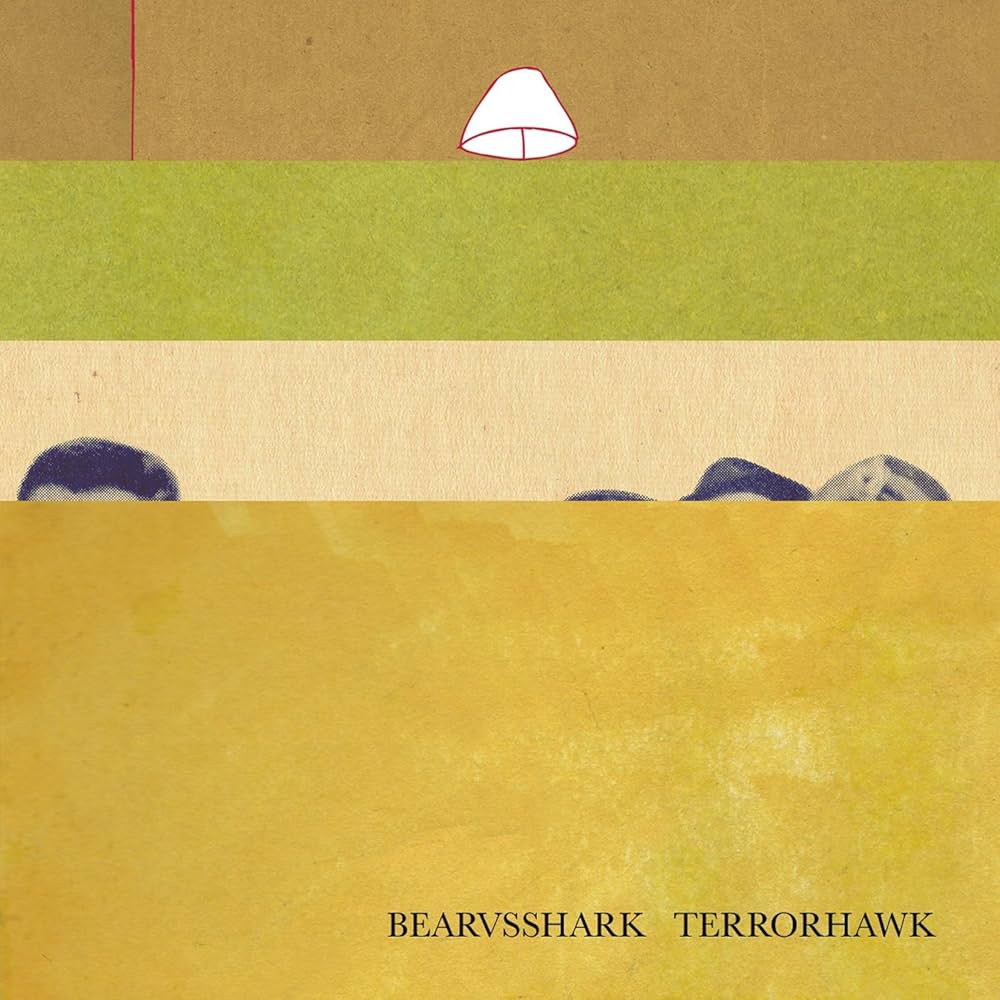
Bear vs Shark – Terrorhawk (Equal Vision)
The best bands are usually the ones who never really fit in, and that’s always been the case for Bear vs Shark. They formed in 2001 in Highland, Michigan, when second wave emo had mostly faded away and third wave emo was about to blow up, and they had a style and ethos that would’ve fit in much better with the former camp. Their 2003 debut album Right Now, You’re in the Best of Hands… is a scrappy, fidgety post-hardcore album that would’ve had BvS fitting nicely on bills with Cap’n Jazz, Braid, and At the Drive-In a few years earlier, and its 2005 followup Terrorhawk found them sanding off their edges without suppressing any of their off-kilter tendencies. If anything, it’s even more adventurous–it’s an art rock/post-hardcore hybrid that sounds like Midwest emo’s answer to late-period Fugazi. With horns, keyboards, cleaner production, and some climactic, slow-burning epics, it’s an album that transcends genre entirely, and it remains one of the 2000s’ smartest, sharpest, and most unique records that you can still mosh to. It’s loud and shouty but never unpoised, artsy but never pretentious. Even 20 years later, listening to it feels like finding a needle in a haystack.
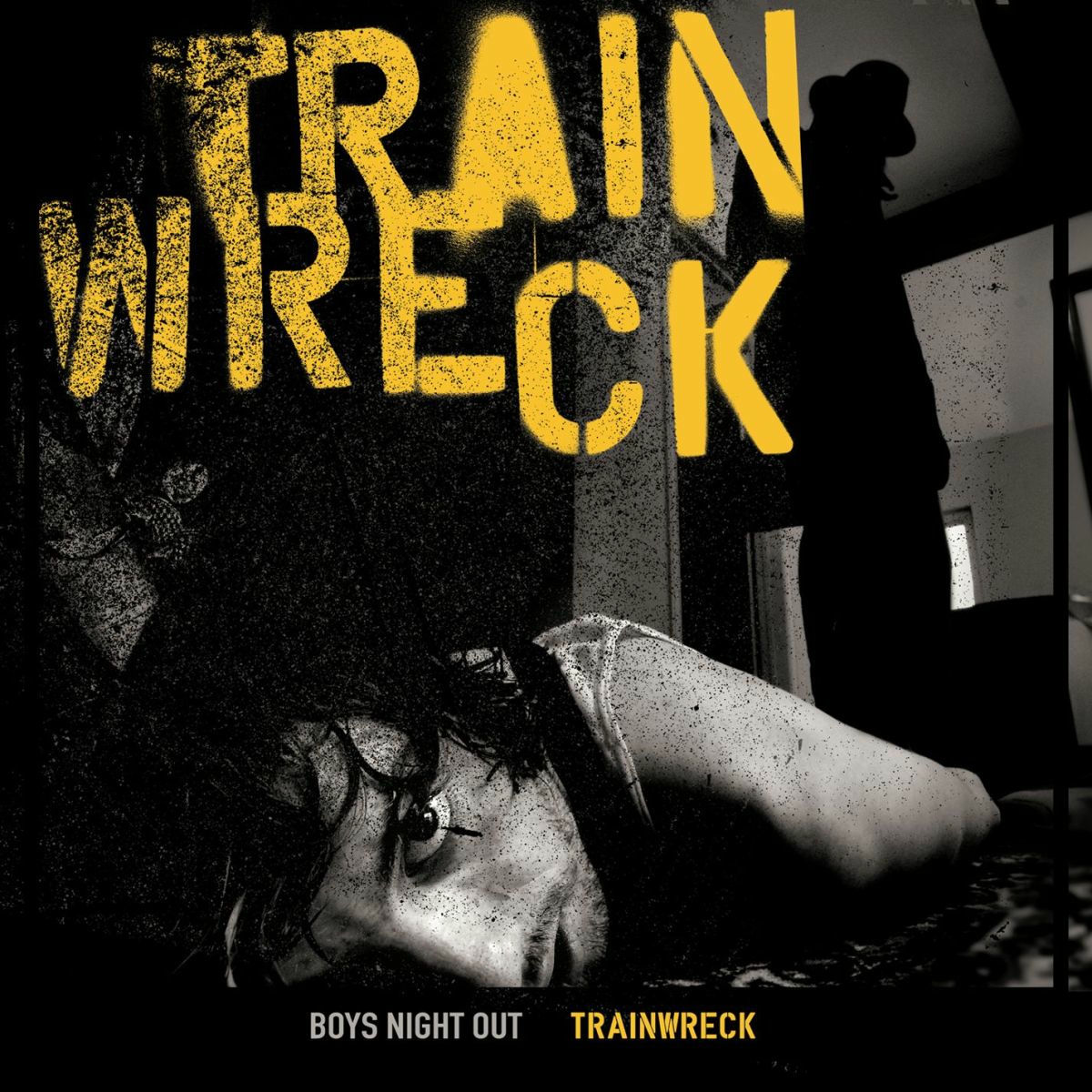
Boys Night Out – Trainwreck (Ferret)
By their own admission, Boys Night Out were one of the bands who contributed to emo’s overly dramatic mallcore stereotypes with their 2002 EP Broken Bones and Bloody Kisses and 2003 debut LP Make Yourself Sick, and when they began writing their sophomore album Trainwreck, they wanted to prove they were more than that. As legend has it, initially they were linked up with a producer who tried to get “more radio hits” and “a record that someone’s going to want to buy for a million dollars” out of them, until they instead linked up with Machine (King Crimson, Lamb of God, etc), who appreciated Boys Night Out’s ambitious goals and pushed the band even further than they’d already been pushing themselves. The result is a concept album about a mentally unwell character called The Patient who, in the midst of a nightmare, accidentally murders his wife in his sleep and then cuts off his own hands out of guilt. The first and last songs contain spoken word monologues from the patient’s doctor, and in between, BNO vocalist Connor Lovat-Fraser sings The Patient’s story from a first-person perspective, while keyboardist Kara Dupuy provides a haunting counterpart as the voice of The Patient’s wife. It’s a clear, concise story that unfolds with each song, and the level of ambition extends from the storytelling into the song structures and instrumentation, which puts a subtly proggy twist on the melodic post-hardcore of the band’s earlier records. “Medicating” got the video treatment and it remains the album’s biggest song on streaming services, but Trainwreck truly is an album that’s best experienced from start to finish.
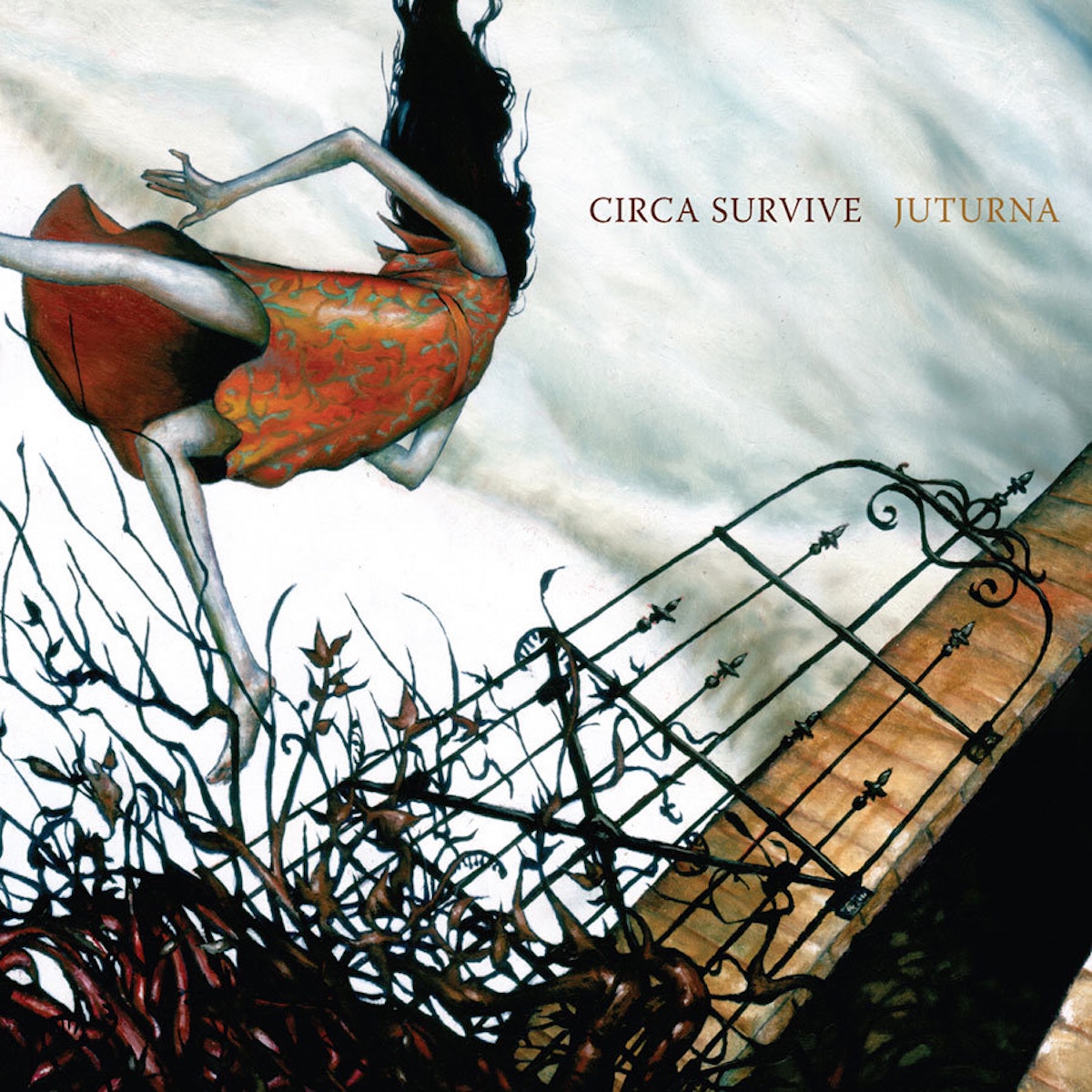
Circa Survive – Juturna (Equal Vision)
The desire to break away from scene stereotypes was tied pretty directly to the inception of Circa Survive. The members had already done time in other established post-hardcore bands, including Saosin, This Day Forward, and Taken, and they wanted to start a new project that retained the energy of the post-hardcore scene while embracing the textural journey of progressive rock and psychedelia. As one of progressive post-hardcore‘s most formative works this side of The Mars Volta and Coheed & Cambria, Circa Survive’s debut album Juturna landed like a bolt of lightning and sounded like almost nothing else at the time. The guitarwork is not just “proggy” but a full-on interlocking web of airy, dizzying leads that never relied on any of the era’s clichés. At the forefront is Anthony Green’s vocal delivery, gritty and ethereal all at once and perfect for taking the music even deeper into cosmic territory. And as the vocal and guitar work go off in all kinds of unexpected directions, the rhythm section keeps things grounded and gut-punching, always making sure Juturna is an album you can rock out to and trip out to all at once.

Every Time I Die – Gutter Phenomenon (Ferret)
After 2003’s Hot Damn! catapulted Every Time I Die to the upper echelon of metalcore, they made an album that looked far beyond the genre: 2005’s Gutter Phenomenon. They embraced radio-friendly production (courtesy of the aforementioned Lamb of God collaborator Machine), fully leaned into their love of classic rock, and wrote choruses that the average rock fan could sing along to, one of which was sung by My Chemical Romance’s Gerard Way, who had become an MTV star a year earlier. (They also got longtime inspiration Daryl Palumbo of Glassjaw to lend his voice to “Champing at the Bit.”) The guests might’ve helped draw in some new fans, but more important was the development of Keith Buckley’s own voice. He had already done clean vocals on the band’s previous two albums, but he’d never belted like he did on “The New Black,” a bluesy, anthemic hard rock song that was almost entirely stripped of the band’s hardcore roots, included on Guitar Hero II, and the reason so many people were introduced to Every Time I Die.
The irony of “The New Black”‘s success is that it was actually intended as satirical commentary about selling out, but Every Time I Die managed to escape receiving their own sellout accusations because their accessible record wasn’t watered-down or cheesy or at odds with the band’s roots. It was already clear by Hot Damn! that ETID were dead set on always pushing forward and never repeating themselves, and that’s exactly what they did on Gutter Phenomenon. The album didn’t abandon anything ETID had previously stood for; it expanded upon what they had already built.
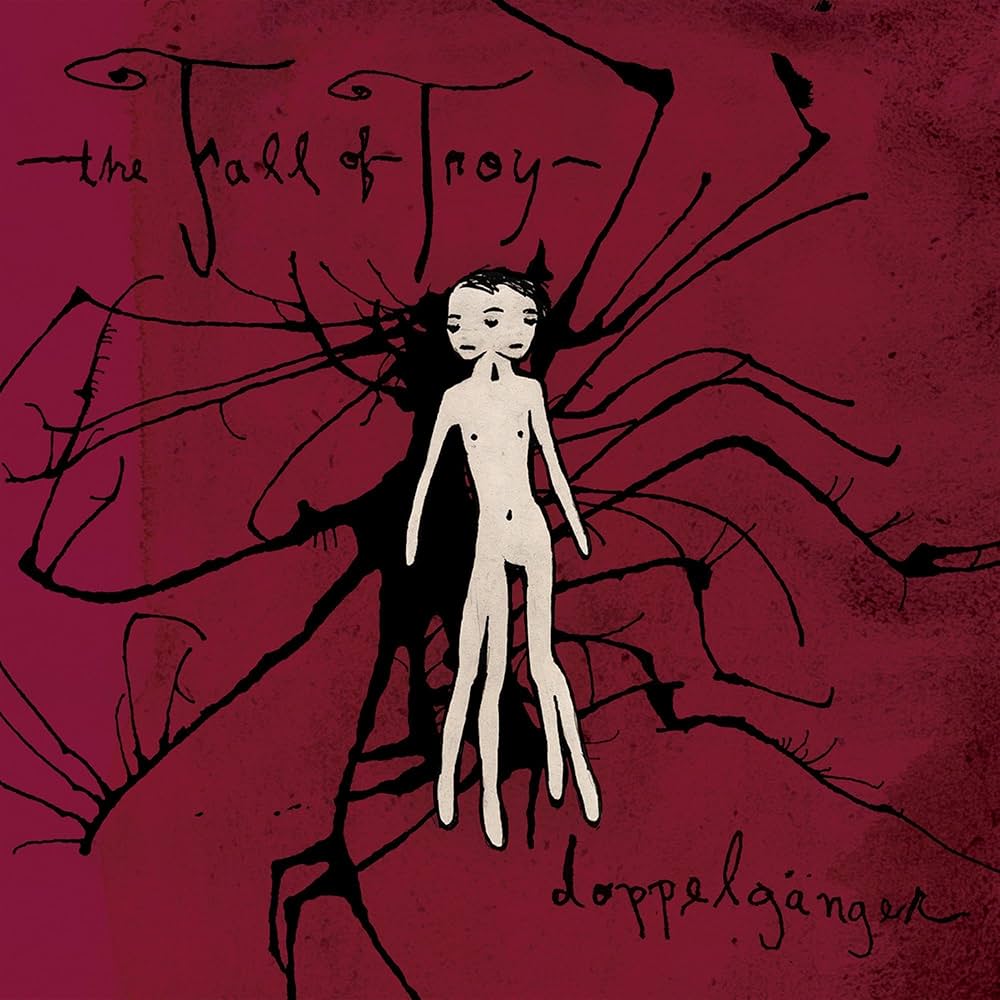
The Fall of Troy – Doppelgänger (Equal Vision)
Was this pop-screamo’s answer to Van Halen? Like EVH, sometimes it felt like The Fall of Troy’s Thomas Erak incorporated his tap-heavy guitar prowess just to show off that he could, while still never letting his technicality get in the way of good, singalong hooks. Their breakthrough sophomore album (and first for Equal Vision) Doppelgänger was powered by re-recordings of four key songs from their self-titled 2003 debut, and it quickly became their definitive record. All of the ingredients of their unique sound are on display: flashy math rock riffs, proggy song structures, and a flamboyant scream/sung mix that owed as much to ’90s screamo as it did to 2000s emo-pop. Doppelgänger‘s an album that can be appreciated by guitar nerds and radio listeners alike, and that “best of both worlds”-ness is a big part of what makes it stand the test of time.
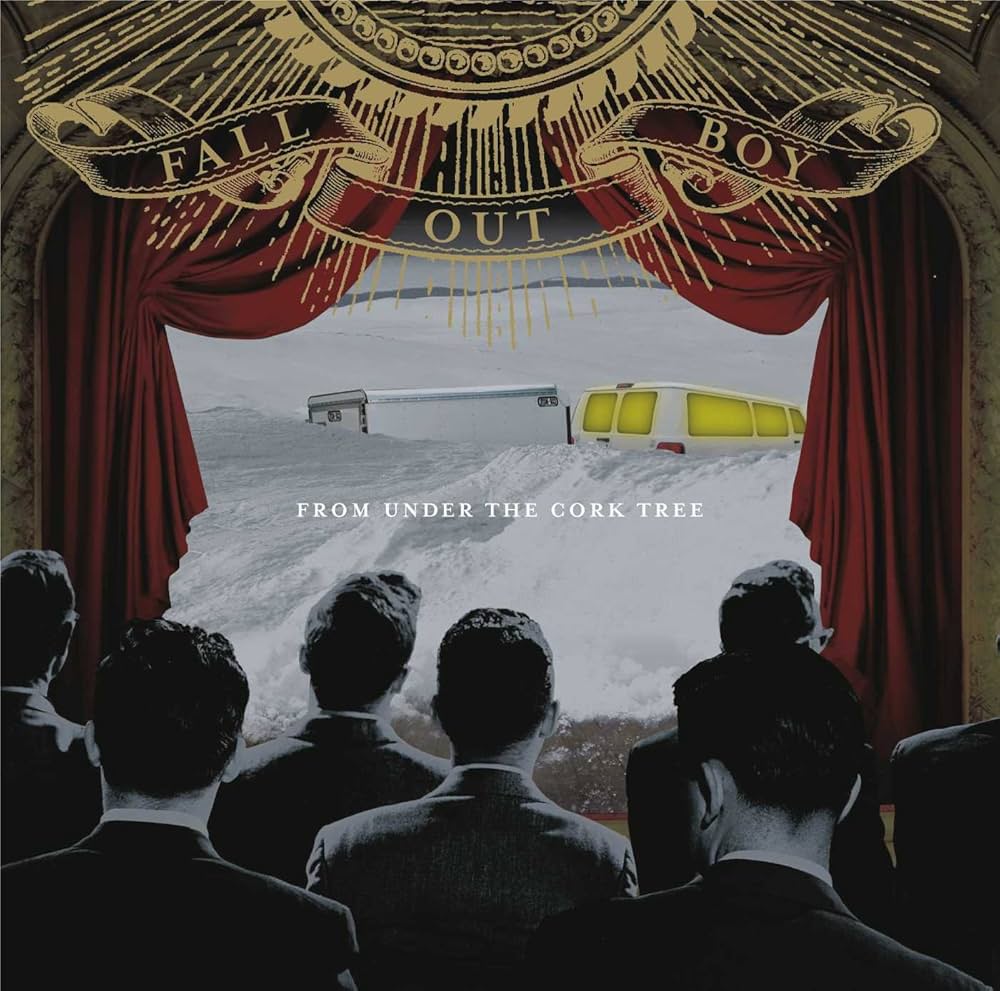
Fall Out Boy – From Under the Cork Tree (Island)
2005 was the year that emo peaked in popularity and it wouldn’t have happened without the combined success of My Chemical Romance and Fall Out Boy, who both went on Warped Tour that summer in support of their respective blockbuster major label debuts, 2004’s Three Cheers for Sweet Revenge and ’05’s From Under the Cork Tree, whose now-iconic singles and music videos brought emo to the masses. At the time, Fall Out Boy’s rockstar ambitions, Patrick Stump’s polished vocal range, and song titles like “I Slept with Someone in Fall Out Boy and All I Got Was This Stupid Song Written About Me” made Fall Out Boy an easy punching bag for those who turned their noses up at how far removed mid-aughts pop-emo was from the genre’s roots, but after 20 years of scene/era/genre-defying longevity, even haters have to admit that maybe these kids were onto something. They saw the way that The Get Up Kids, Saves The Day, and New Found Glory combined pop songwriting, hardcore punk energy, and emo melodrama, and they imitated that formula on their 2003 debut album Take This To Your Grave (and on their disowned mini-LP Fall Out Boy’s Evening Out with Your Girlfriend from that same year) before pushing it to its most populist conclusion on 2005’s From Under the Cork Tree. Produced by then-frequent New Found Glory collaborator Neal Avron, the album sounds like a million bucks and it’s pretty much all hits. Multi-platinum singles “Sugar, We’re Goin Down” and “Dance, Dance” were and still are actual hits, and the less universally-remembered songs are just as catchy, substantial, and enduring. It’s a picture-perfect example of taking an already-beloved style of music, putting your own spin on it, and figuring out how to bring it to the masses. And listening to it now, with a couple decades of hindsight, is it really as far removed from emo’s roots as people used to say it was?
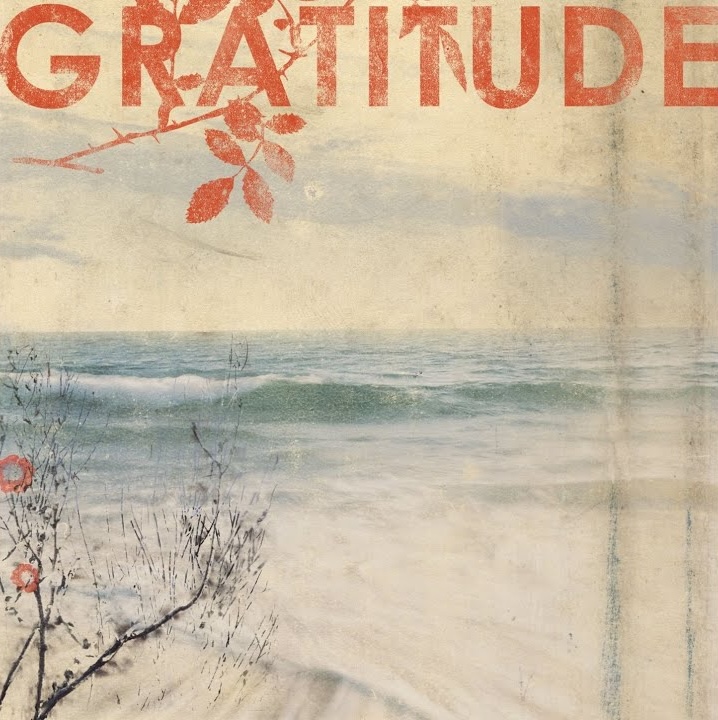
Gratitude – Gratitude (Atlantic)
Jimmy Eat World weren’t the only emo second-wavers who had a great, big American rock record in them. In a just world, The Jealous Sound, Piebald, and Hot Rod Circuit would’ve had their big moments too, and Jonah Matranga (Far, onelinedrawing, New End Original) would’ve had his with Gratitude. The band’s sole self-titled album had the backing of a major label (Atlantic), a big-name veteran producer (Jim Scott, who worked on Tom Petty’s Wildflowers and Foo Fighters’ One by One), and exactly the kinds of larger-than-life rock songs that took Jimmy Eat World out of obscurity on Bleed American. Gratitude even toured with Jimmy after this album came out, but the record failed to hit and inner-band tension caused the band to break up soon after its release. It’s a shame, because this had all the makings of a mainstream breakthrough without sacrificing any of Jonah’s uniqueness or charm. Even if you take the commercial aspect out of it, it’s a thrill to hear what it sounds like when a great underground songwriter is given the resources to make a record that sounds as crisp and massive as this one does. And Gratitude met the moment with enduring bangers (“Drive Away,” “Last,” “This Is the Part”) and sentimental ballads (“Someone to Love,” “If Ever,” “The Greatest Wonder”) that can still spar with the alt-rock hits of that era.
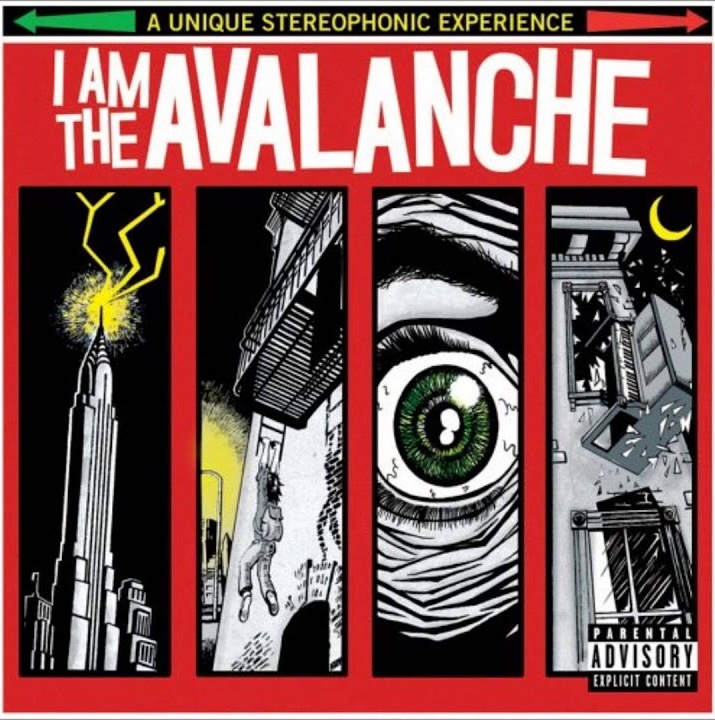
I Am the Avalanche – I Am the Avalanche (Drive-Thru)
The Movielife are and will always be a melodic hardcore band, but when the post-Enema of the State pop punk boom hit, they were in the right place at the right time to slightly polish things up and catch some of that wave. But shortly after releasing their could-be-breakthrough 2003 album Forty Hour Train Back to Penn, they called it quits, and what happened in the aftermath made it seem like the members of The Movielife were shunning the idea of emo/pop punk stardom entirely. Guitarist Brandon Reilly went full Smiths worship with his new band Nightmare of You, and vocalist Vinnie Caruana began marching to the beat of his own drum in his new band I Am the Avalanche. Vinnie will always be a Long Island hardcore kid at heart, and he brought that energy to IATA and weaved it into a patchwork quilt of indie rock, post-hardcore, grunge, a hint of reggae, and enough wide-eyed whimsy to go from musing over someone calling his sneakers “tennis shoes” in one song to taking a baseball bat to the knees in the next. It’s got gritty gang vocals, playful pianos, punk rippers, emotional ballads, and discordant verses that resolve into huge, satisfying choruses. I ride very hard for The Movielife, but there are days when I’ll call this Vinnie’s best-ever album. There’s nothing else like it.
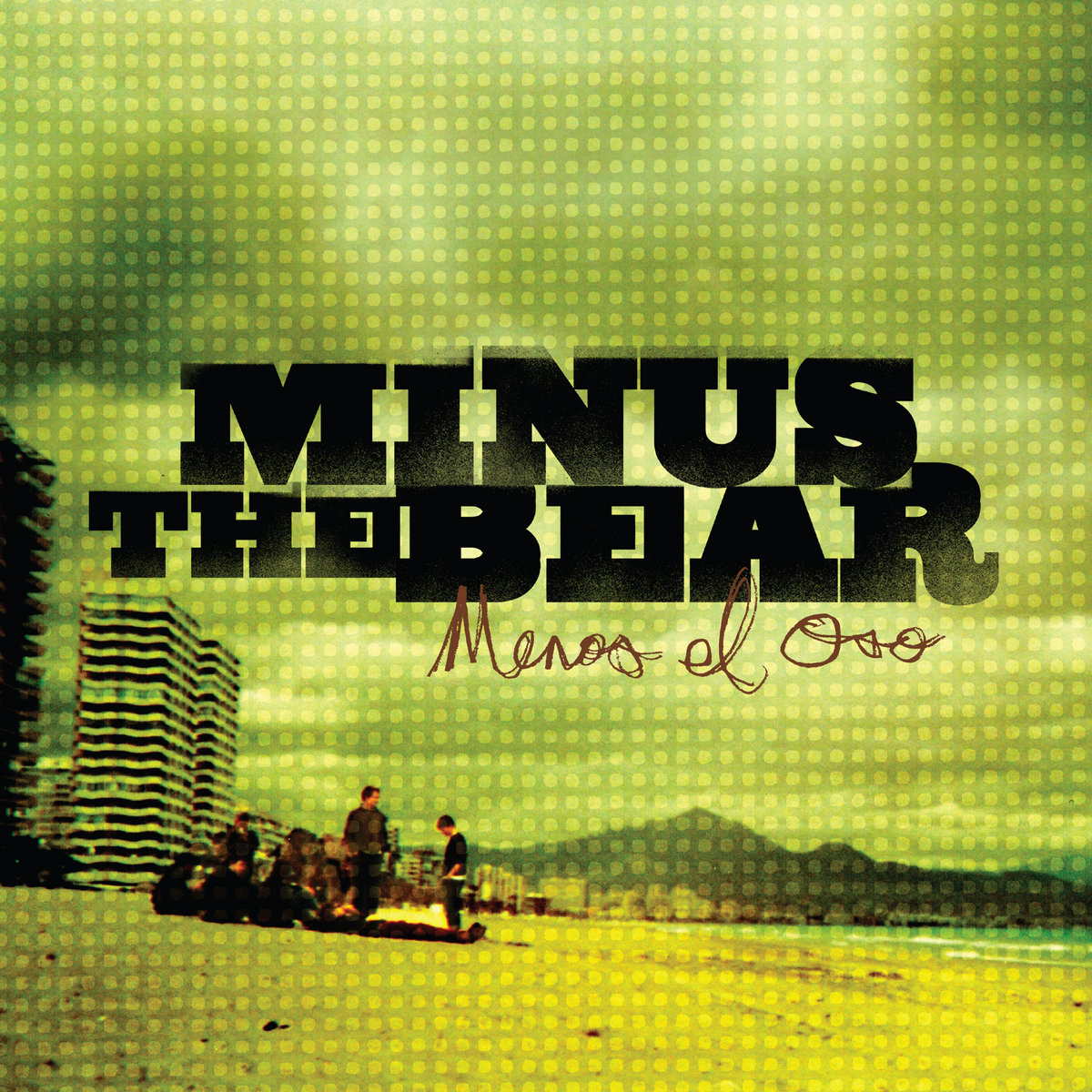
Minus The Bear – Menos El Oso (Suicide Squeeze)
My guess is that if you surveyed a group of Minus The Bear fans and asked them to all name their favorite album by the band, the two most popular answers would be their 2002 debut album Highly Refined Pirates and their 2005 sophomore album Menos El Oso. Those two albums and the EPs that preceded each one really defined the classic Minus The Bear sound, birthed the bulk of the band’s most widely loved songs, and all still sound just as fresh and unique today as they did two decades ago. Highly Refined Pirates has the edge for me, but Menos El Oso is also a near-perfect album that found Minus The Bear operating at the absolute top of their game. As the story goes, this album was written after the band toured Spain, and that’s where it gets its Spanish album title, its artwork, and its iconic single that takes place at midnight on a beach in the Mediterranean. As a result, it’s the band’s warmest, most relaxed album, covered in the haze of a summer that’s too good to be true. Or, as Jake puts it in “Drilling”: “It may be a dream, and we come to this place like two convicts that have escaped from the prison of everyday.”
As a lyricist, Jake had fully hit his stride on Menos El Oso. The songs are so vivid, so imagery-inducing, and he makes all the tiny parts of life feel huge. He turns everyday moments into poetry (“A swimming pool with no bodies is a problem that we can fix”), he puts care into the carefree (“This is a city for not sleeping, the clocks are set by feel”), and conversations play out like movie dialogs (“‘Come on man,’ she said, ‘We have to leave this town/I can’t stand another day without the rain’”). As he lays out his stories, the band crafts one stunning backdrop after the next. Songs go from dancey to mathy to rockin’ at the drop of a hat, and Minus The Bear sound totally in the pocket at every turn. Guitars can be shimmering and beautiful, or tech-y and mind-bending. They sound like a band who love punk as much as they love funk, without ever fitting neatly into either one, and you get a small taste of the prog influences that would get fully explored on Planet of Ice too. Some songs feel anxious and jittery, others feel smooth and chill. On Menos El Oso, Minus The Bear’s unique blend of influences had come together so seamlessly that it became fully impossible to try to shoehorn them into any individual genre of music. They were just Minus The Bear, and they were very, very good at being that.
Minus The Bear also released an expanded 20th anniversary edition of ‘Menos El Oso’ this year and we’ve got an exclusive coke bottle green vinyl variant available now.
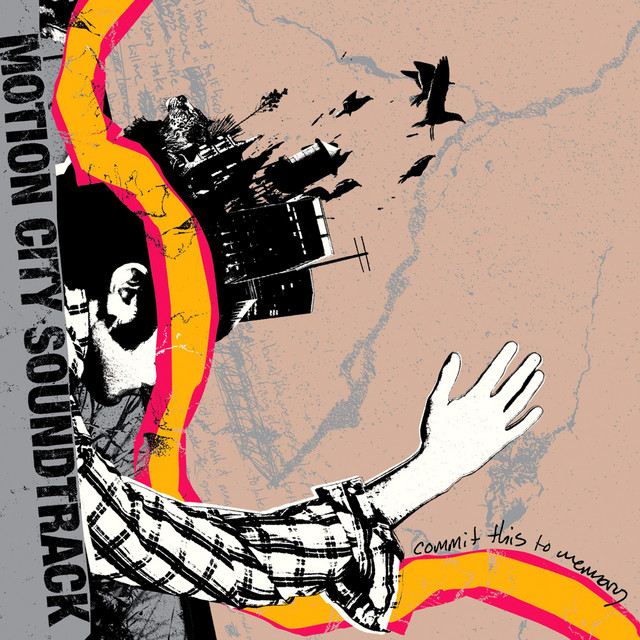
Motion City Soundtrack – Commit This to Memory (Epitaph)
It makes sense that a perfect pop song like “Everything Is Alright” would get as popular as it did, but it’s a shame the way it’s come to overshadow the rest of Commit This to Memory, a no-filler album that’s every bit as strong as its world-conquering lead single. That song and followup single “L.G. Fuad” (aka “Let’s Get Fucked Up and Die”) perfectly set the tone for the full LP: deceptively simple and peppy with a dark undercurrent informed by mental health struggles and addiction. The album toes that line throughout, with a batch of fine-tuned songs that sharpen the formula of the band’s already-great 2003 debut LP I Am the Movie. It marked the production debut of blink-182’s Mark Hoppus, who also sang on “Hangman,” and it also features Fall Out Boy’s Patrick Stump on “Everything Is Alright,” but despite being in the company of pop punk giants, Commit This to Memory was really only pop punk by association. Like their debut, it was much more indebted to their ’90s power pop and indie rock influences like Weezer, The Rentals, and Superchunk, and singer Justin Pierre also cited the bookish indie rock of their 2003 tourmates and Epitaph labelmates The Weakerthans’ Reconstruction Site for this one, an influence that’s not hard to hear on his own quirky, literate screeds. Their refusal to follow trends is why Motion City Soundtrack always stood out from their peers back in the day, and it’s a big part of why albums like this one hold up so well today too. It was just similar enough to the mid-aughts pop punk/emo boom to be embraced by that scene, and just different enough that 20 years later it still doesn’t sound dated.
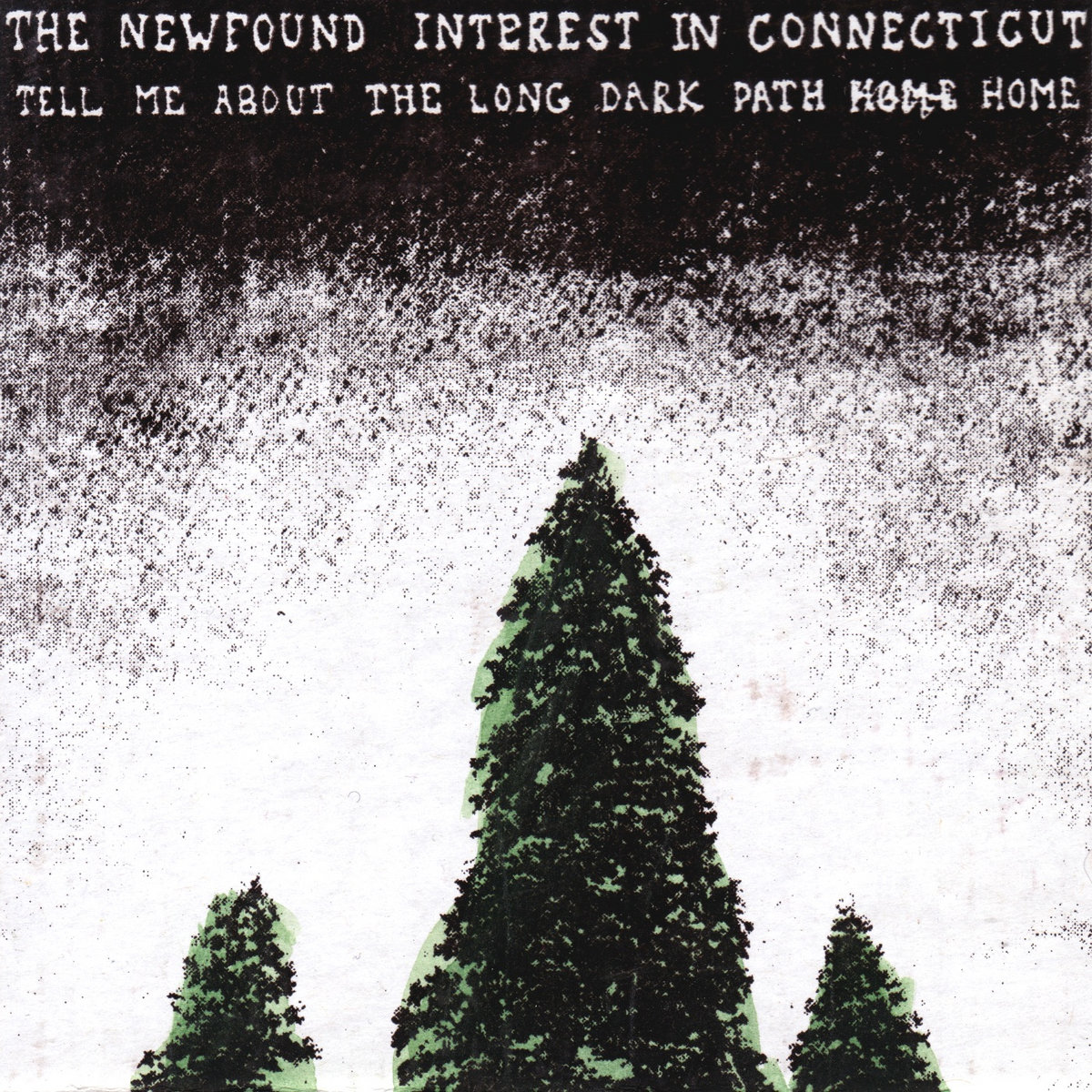
The Newfound Interest in Connecticut – Tell Me About the Long Dark Path Home (Busy Bodies)
The early/mid 2000s was a dead zone for the type of “Midwest” emo that was pioneered in the mid ’90s and revived in the late 2000s, but there were a few true believers that kept it alive: bands like Colossal, Up Up Down Down, The Progress, and the subject of this blurb, The Newfound Interest in Connecticut. As “Midwest emo” as they sounded, this band hailed from Toronto, and they released one EP, one split, and this full-length before calling it quits the same year the album came out. Their brief initial run ended without leaving a huge impact–members went on to have non-emo success in the bands DD/MM/YYY and Absolutely Free–but as interest in this particular type of emo grew later on, interest in The Newfound Interest in Connecticut grew as well. By the time this band reunited in 2024, they’d become cult heroes. It’s not hard to see why; their mathy, slowcore-ish, post-rock-infused emo picked up where American Football and Mineral left off and predicted The World Is a Beautiful Place & I Am No Longer Afraid to Die’s first album by about eight years, with just a hint of screamo in the mix too. They approached DIY emo with grand artistic ambition, and they made familiar moves in ways that stood out from the bands that came before them. Tell Me About the Long Dark Path Home isn’t just a rare gem because it was so out of step in its time; it’s also because, 20 years later, it still stands tall next to anything it could be considered similar to.
Newfound Interest in Connecticut – Tell Me About The Long Dark Path Home by We Are Busy Bodies

Panic! at the Disco – A Fever You Can’t Sweat Out (Decaydance/Fueled by Ramen)
The superficial similarities between Brendon Urie and Patrick Stump’s voices caused one reviewer to accuse Panic! at the Disco of “ripping [Fall Out Boy] off so blatantly it’s downright laughable,” and being the first band signed to Fall Out Boy bassist Pete Wentz’s Fueled by Ramen imprint Decaydance Records didn’t help Panic escape any of those comparisons. But the comparison was always unfair, as were the multiple accusations that Panic’s debut album A Fever You Can’t Sweat Out lacked originality. Fall Out Boy were more or less a straight-up pop punk band at that point, while A Fever You Can’t Sweat Out–love it or hate it–really didn’t sound like anything else. Written and recorded when the members were barely out of high school, Panic! at the Disco took pop punk and emo and twisted it with circus music, cabaret, showtunes, breakbeats, glitch pop, synthpop, dance-punk, orchestral art pop, and whatever else they could think of tossing into this melodramatic stew. At a time when dime-a-dozen emo-pop clones were in fact incredibly easy to come by, these kids were ambitious to the point of absurdity. The lengthy song titles like “The Only Difference Between Martyrdom and Suicide Is Press Coverage” and “There’s a Good Reason These Tables Are Numbered Honey, You Just Haven’t Thought of It Yet” and the sassy couplets like “Well, we’re just a wet dream for the webzine/Make us it, make us hip, make us scene” and “So, testosterone boys and harlequin girls/Will you dance to this beat and hold a lover close?” were easy targets for those who felt like emo had just gone too far, and it’s too bad that this band’s detractors were too distracted by the flamboyant melodrama to appreciate the artistic vision. It makes a lot of sense in hindsight that guitarist/core songwriter Ryan Ross went full Sgt. Pepper’s on Panic! at the Disco’s next album before leaving the band and starting the Kinksy Young Veins while Brendon Urie later turned P!ATD into a top 40 solo act. That clash of wide-eyed artsy wonder and unabashed mainstream appeal made Panic! at the Disco who they were, and the balance between those two extremes on A Fever You Can’t Sweat Out was just right.
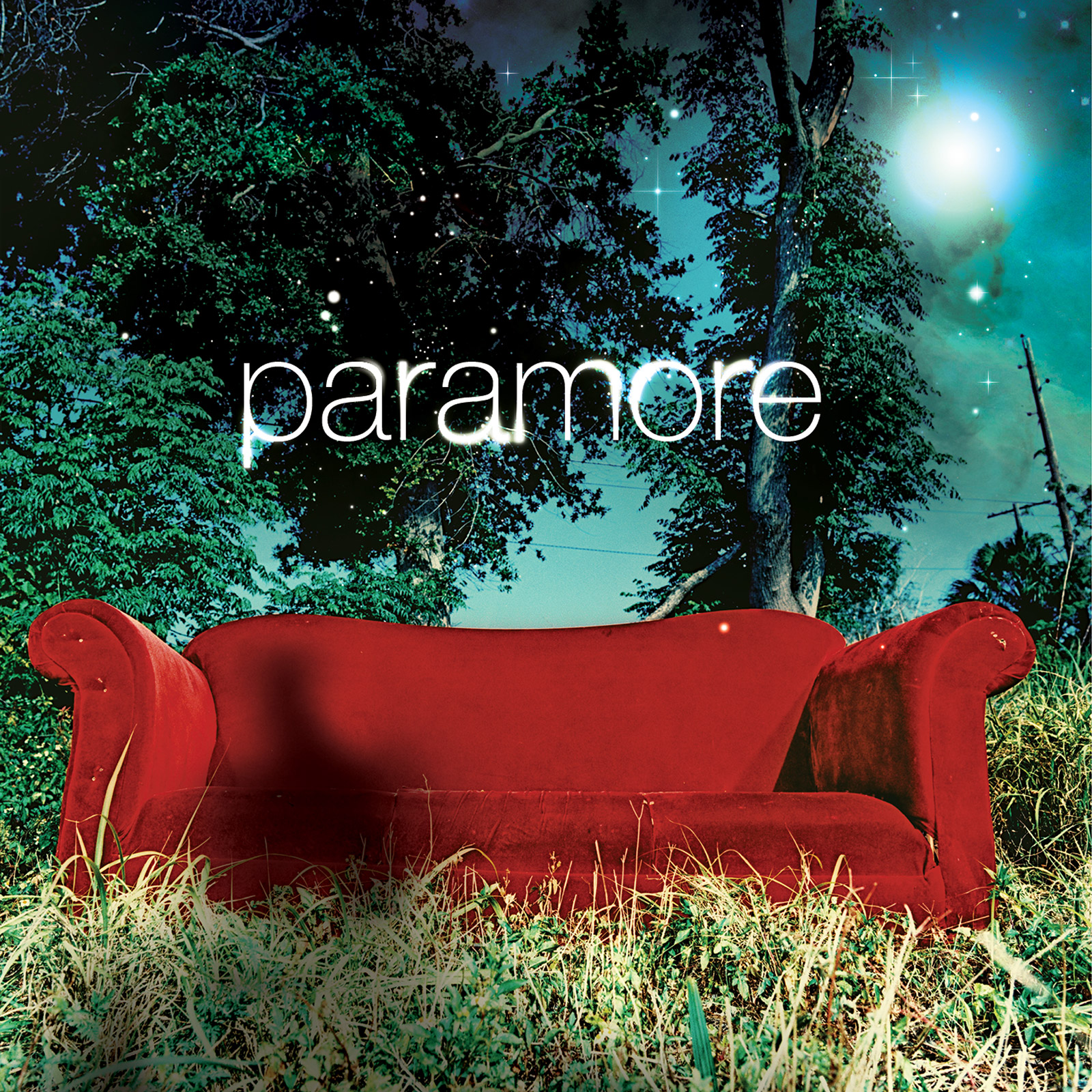
Paramore – All We Know Is Falling (Fueled by Ramen)
It only took a few seconds into their debut single “Pressure” for it to become clear that Paramore were a force to be reckoned with. An ultra-catchy guitar riff kicks things off, Zac Farro comes barging in with one of his many airtight drum fills, and the song shoots off into pop punk bliss. Things only get better when Hayley Williams introduces the world to her now-iconic voice, and the song levels up once again when it explodes into its floor-shaking, half-time chorus. Hayley’s powerhouse hook is undeniable, and when guitarist Josh Farro throws in that little major seventh bend, you really hear how Paramore were pulling from spacier post-hardcore early on and not just straight-up pop punk.
“Pressure” would’ve been enough on its own to make Paramore the Warped Tour/Hot Topic scene’s new buzz band, but All We Know Is Falling didn’t stop there. It birthed two more scene-dominating singles (“Emergency” and “All We Know”) and the remaining seven songs were nothing to scoff at either. It’s one of those solid ten-song albums where the whole thing just rocks from start to finish with no filler in sight. They change it up just enough to keep things interesting–from the driving pop punk of the singles to the balladry of the last three songs, and some cool in-between stuff like the mid-tempo “Brighter” and the half dancey, half spacey “Here We Go Again”–without ever deviating too far from the tone set by “Pressure.” Paramore would perfect their pop punk/emo formula on Riot! and Brand New Eyes before branching out into other territories on later LPs, but All We Know Is Falling saw Paramore knocking it out of the park on the first swing, even if their best work was still to come.
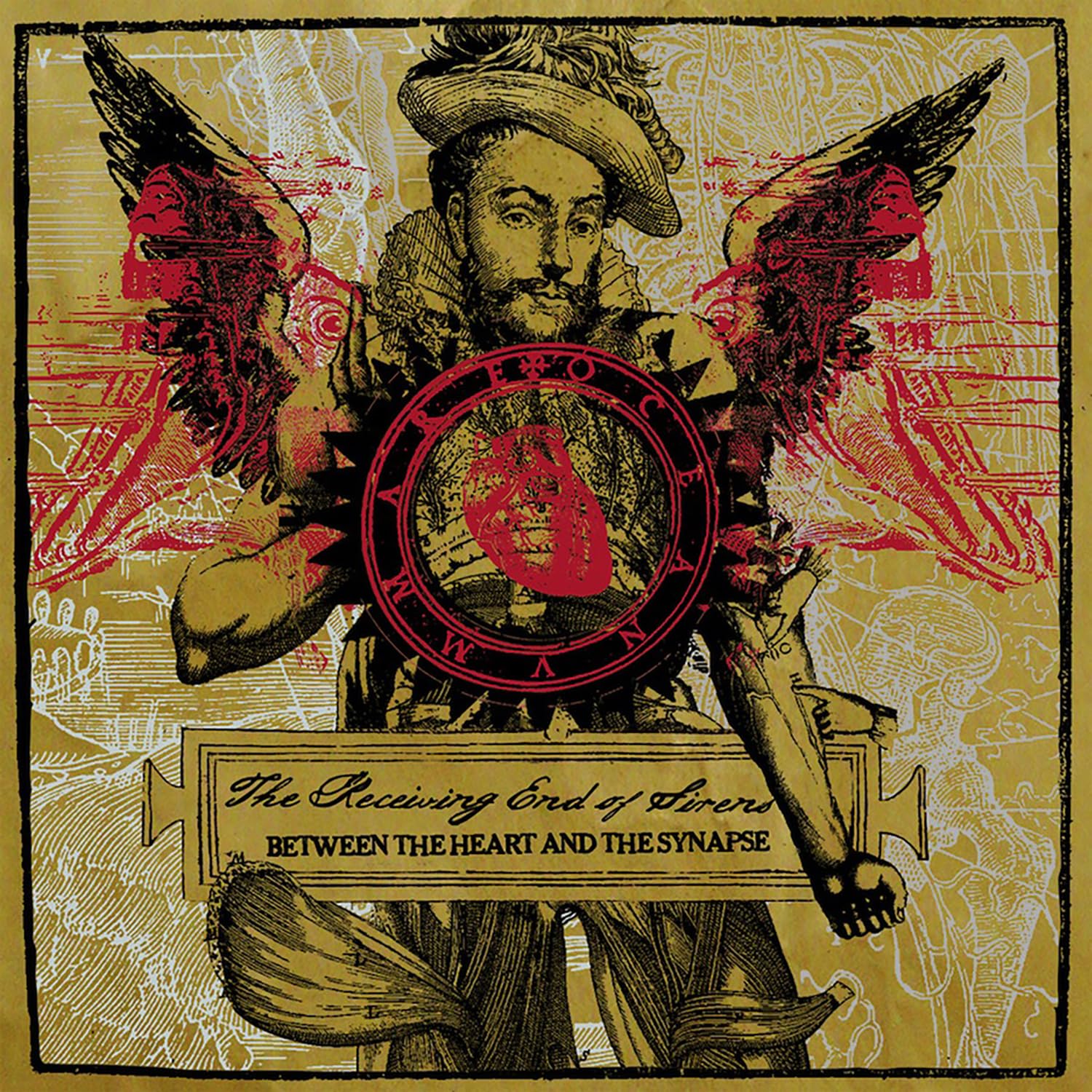
The Receiving End of Sirens – Between the Heart and the Synapse (Triple Crown)
If there’s one word to describe the debut album by The Receiving End of Sirens, it’s “big.” It clocks in at 70 minutes, it employs stadium-sized production, and it features three guitarists and three lead singers, along with seven guest vocalists (including Anthony Green on two tracks). It incorporates everything from sugary emo-pop to chugging metalcore to ambient interludes to electronic industrial rock and more, and it’s structured like a ’70s prog concept album, frequently eschewing typical verse-chorus-verse song structures and having each song flow directly into the next. Recurring lyrics and melodies appear throughout the album, often delivered with the kinds of multi-part harmonies that you rarely hear in post-hardcore. The clean-sung vocals are as wailing as ’70s prog bands, and the screams are as harsh as ’90s screamo and metalcore. The lead guitar has classic prog complexity while the chunky, power chord-driven rhythm guitar is about as Warped Tour as it gets. After this album, co-lead vocalist Casey Crescenzo would leave the band to focus on his own project, The Dear Hunter, who were a lot more prog and a lot less post-hardcore than TREOS, and TREOS would release their second and final album without him, The Earth Sings Mi Fa Mi. Good stuff came out of both projects, but none of it ever existed at the exact intersection between post-hardcore and progressive rock like Between the Heart and the Synapse did.
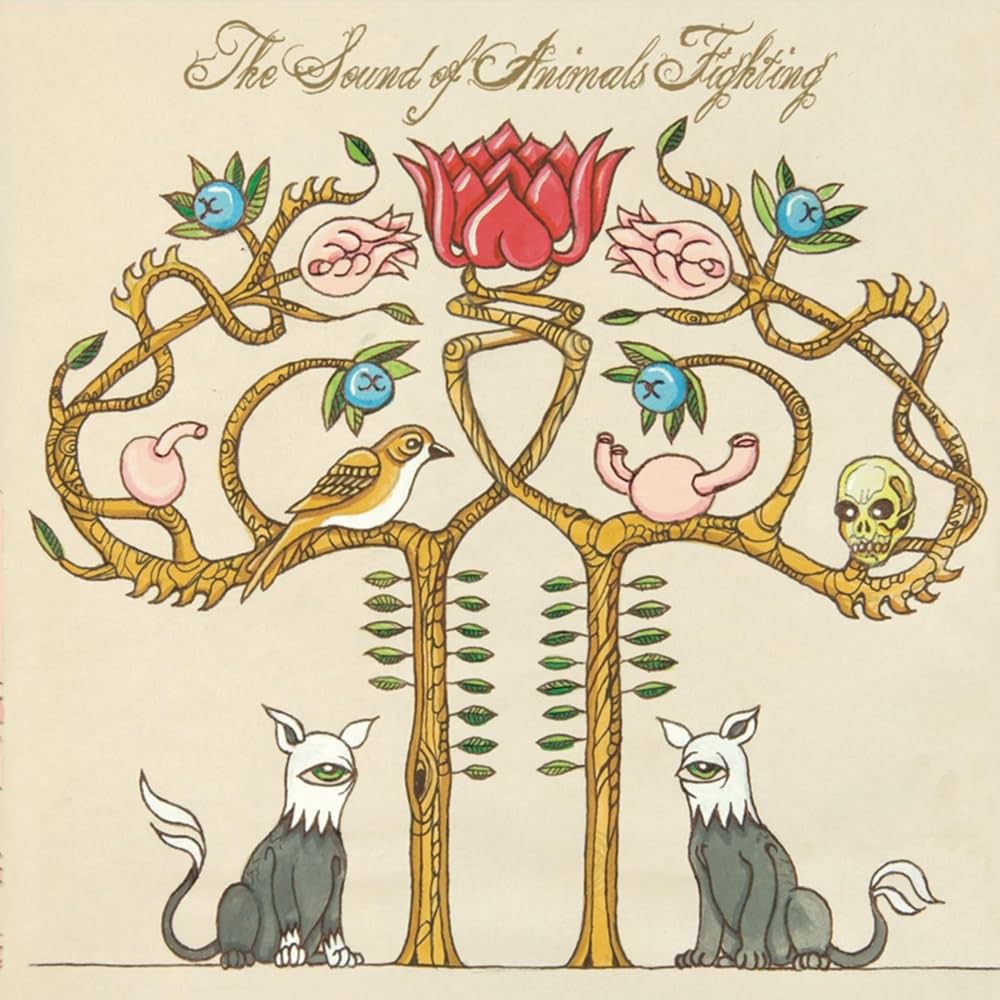
The Sound of Animals Fighting – Tiger and the Duke (Equal Vision)
Two months before Anthony Green released his first album with Circa Survive, he lent his voice to the debut album by the supergroup/collective The Sound of Animals Fighting. Circa Survive had a progressive take on post-hardcore that veered towards atmospheric psychedelia, but TSOAF took a more traditionally prog approach and they also honored the “hardcore” part of “post-hardcore” more than Circa. Some of the gnarliest screams of Anthony Green’s career are on this album, and the band — which on this album featured three RX Bandits members and two Finch members — churned out some of the most kickass proggy post-hardcore riffs of the 2000s on this LP. TSOAF may have been second fiddle to the members’ main bands as far as live shows went (their tours remain rare), but they took this band way too seriously in the studio for it to be considered a “side project.” Tiger and the Duke was one of the most unique albums to come out of this whole scene at the time, and there’s still almost nothing that sounds like it.
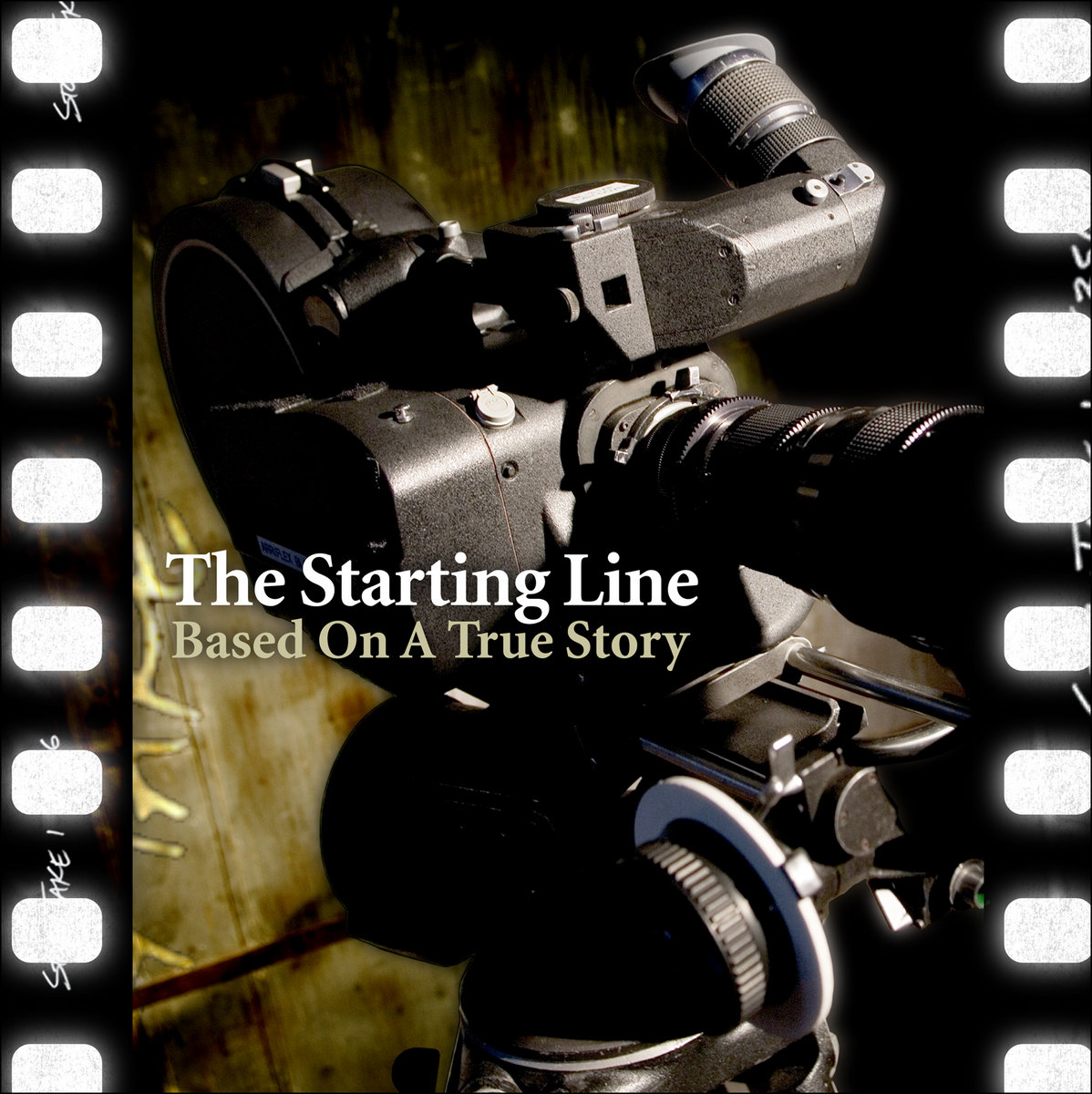
The Starting Line – Based on a True Story (Drive-Thru/Geffen)
With their 2002 debut album Say It Like You Mean It and its breakout single “The Best of Me,” The Starting Line released one of the most picture-perfect, polished-up pop punk albums of the genre’s post-Enema of the State boom, and they had no interest in repeating that successful formula–much to Geffen Records’ dismay. “Geffen sat us down and basically told us they wanted us to write a Simple Plan record—something more pop sensible and something they could put on the radio right away,” guitarist Matt Watts told AbsolutePunk in 2006. “And they were pushing for singles, but we fought to the death to write the record that we wanted to write. We didn’t want to put out Say It Like You Mean It part 2.”
What they did put out was Based on a True Story, a rawer, darker, heavier record that’s more Clarity than Enema of the State, and one on which singer Kenny Vasoli directly addressed some of the pressure that was being put on the band to write more hits (“Get to the point, get it across to the boys at the top of the ladder” on “Inspired by the $”; “We’re to continue singing these ones to the same demographic, be it not perfect” on “Ready”). Kenny’s voice sounds looser, freer, more human–closer to the music he’d make in his post-Starting Line band Person L–and the songs range from riffy post-hardcore (“Inspired by the $”) to soaring emo balladry (“Photography”) to punchy power pop (“The World”). Even the album’s very catchy lead single (“Bedroom Talk”) feels toned-down compared to non-singles on Say It Like You Mean It. The Starting Line would make a clean break from pop punk on 2007’s Direction (their best record) and Kenny would drift even further away with Person L and Vacationer, and Based on a True Story remains the album where the seeds for all of that were planted. It was the album that told the world that The Starting Line can’t be put into a box, and it remains an appealing middle ground between where the band started and where they were headed.
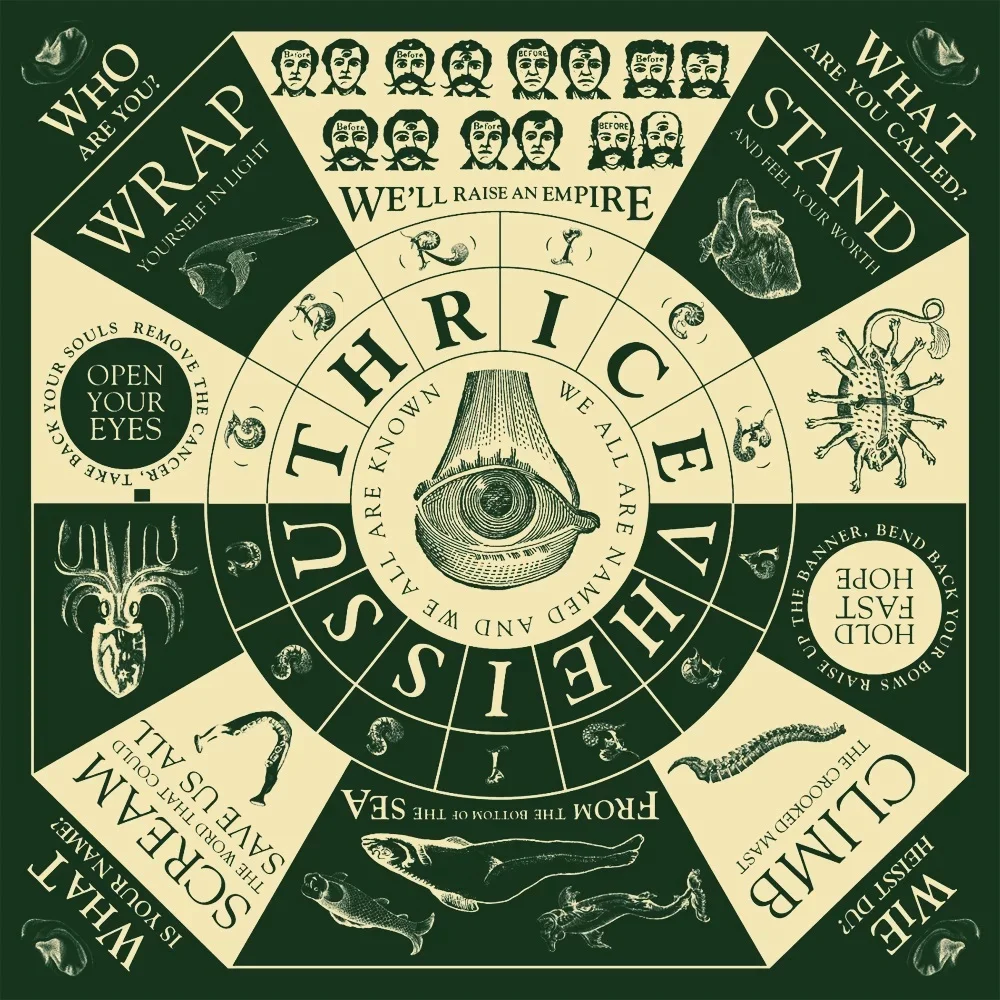
Thrice – Vheissu (Island)
Thrice’s first three albums found them honing a unique blend of post-hardcore, metalcore, pop punk, and emo, and they took it to a near-perfect level on 2003’s The Artist in the Ambulance. And after pushing that sound just about as far as it could go, they were ready for something new. The closest that its followup album Vheissu comes to the radio-friendliness of The Artist in the Ambulance is opening track “Image of the Invisible,” which remains a Thrice banger for the ages. Outside of that, the album goes in a more atmospheric direction, whether that’s the keyboard-driven art rock of “Atlantic” or the Isis-style post-metal of “The Earth Will Shake.” They cited Talk Talk as a big influence on the album, and made it a point to work with a producer known for airy British bands like Elbow, Placebo, and Doves (Steve Osborne), rather than frequent Thrice collaborator and hardcore veteran Brian McTernan. “For Miles” is an homage to Miles Davis with a piano motif that walks the walk. And on Vheissu, Thrice did all of these things within the context of being a heavy band from the post-hardcore scene; they didn’t bust out of their genre entirely the way they would do on 2007/2008’s The Alchemy Index. The result was a remarkable middle ground that challenged the boundaries of post-hardcore without abandoning its unique thrills, a feat that’s only rarely been pulled off as expertly as Thrice did on Vheissu. It terms of artistry, creativity, and originality, it remains one of its era’s most unparalleled records.
**
You can also check out the full list in video form:
Related Articles
Watch The 1975’s Matty Healy shed tears watching “his favourite artist” James Taylor
The fiancée of The 1975’s Matty Healy has shared footage of him...
The Alien Franchise Inspired One Of The Best Sci-Fi Video Games Ever Made
As much as the Alien franchise has influenced other movies, it also...
The Sunshine Underground announce one-off reunion show for summer 2026 in Leeds
The Sunshine Underground have announced a one-off comeback show for next summer...
10 Marvel Characters Who Could Beat Batman In A Fight
The Dark Knight may be one of the best fighters in the...










Leave a comment